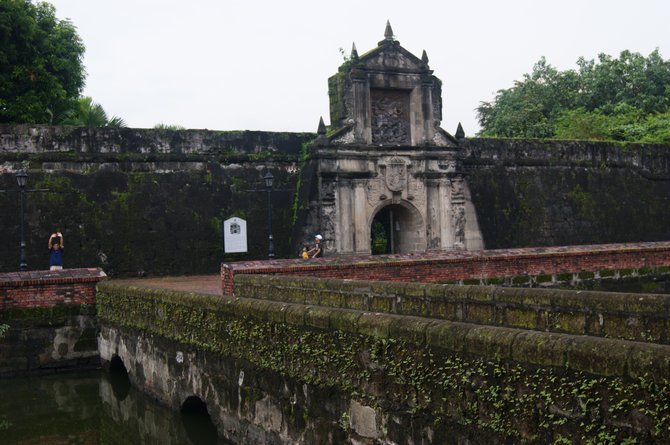 Facebook
Facebook
 X
X
 Instagram
Instagram
 TikTok
TikTok
 Youtube
Youtube

You might find yourself in Manila on a stopover on your way to some of the country’s most pristine beaches – or on the way home from Thailand. Whatever your reason, Manila does have some interesting sights, and it’s worth spending a day or two exploring.
Intramuros is home to the city’s Spanish architecture, and you’ll feel as though you’re wandering the streets of Barcelona. The Manila Cathedral is absolutely breathtaking; you can even catch a wedding ceremony on Sundays.
Fort Santiago is essentially a shrine dedicated to the national hero, Jose Rizal, a catalyst in the Philippine revolution. It dates back to the 16th century and also houses some great views of the city.
The Coconut Palace is the current vice president’s residence and its name derives from its structure. Walking along the nearby waterfront is an ideal way to view the city’s skyline (although the harbor is riddled with trash).
Filipinos have a huge sweet tooth: some of my favorite desserts include banana cue and taro cake. A bakery pit stop is a must.
Manila is not a safe city, and I don't recommend walking around by yourself at dark. Personally, I’ve traveled all over Southeast and East Asia, and in my experience, I felt the most unsettled in Manila. That being said, there’s no reason to be frightened, but exercise caution and awareness.
Jeepneys are former American military vehicles transformed into public buses. If you want to get local, use one of these to travel. They cost only four pesos per ride – although be sure to ask the driver where he's heading. For the most part, Filipinos speak excellent English.
If you are considering staying in Manila for an extended period, consider volunteering at Fo Guang Shan’s Buddhist community center. They will provide accommodation, and you'll be able to work with some of Manila’s at-risk youth.


You might find yourself in Manila on a stopover on your way to some of the country’s most pristine beaches – or on the way home from Thailand. Whatever your reason, Manila does have some interesting sights, and it’s worth spending a day or two exploring.
Intramuros is home to the city’s Spanish architecture, and you’ll feel as though you’re wandering the streets of Barcelona. The Manila Cathedral is absolutely breathtaking; you can even catch a wedding ceremony on Sundays.
Fort Santiago is essentially a shrine dedicated to the national hero, Jose Rizal, a catalyst in the Philippine revolution. It dates back to the 16th century and also houses some great views of the city.
The Coconut Palace is the current vice president’s residence and its name derives from its structure. Walking along the nearby waterfront is an ideal way to view the city’s skyline (although the harbor is riddled with trash).
Filipinos have a huge sweet tooth: some of my favorite desserts include banana cue and taro cake. A bakery pit stop is a must.
Manila is not a safe city, and I don't recommend walking around by yourself at dark. Personally, I’ve traveled all over Southeast and East Asia, and in my experience, I felt the most unsettled in Manila. That being said, there’s no reason to be frightened, but exercise caution and awareness.
Jeepneys are former American military vehicles transformed into public buses. If you want to get local, use one of these to travel. They cost only four pesos per ride – although be sure to ask the driver where he's heading. For the most part, Filipinos speak excellent English.
If you are considering staying in Manila for an extended period, consider volunteering at Fo Guang Shan’s Buddhist community center. They will provide accommodation, and you'll be able to work with some of Manila’s at-risk youth.
Comments